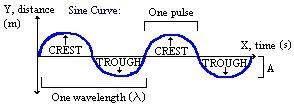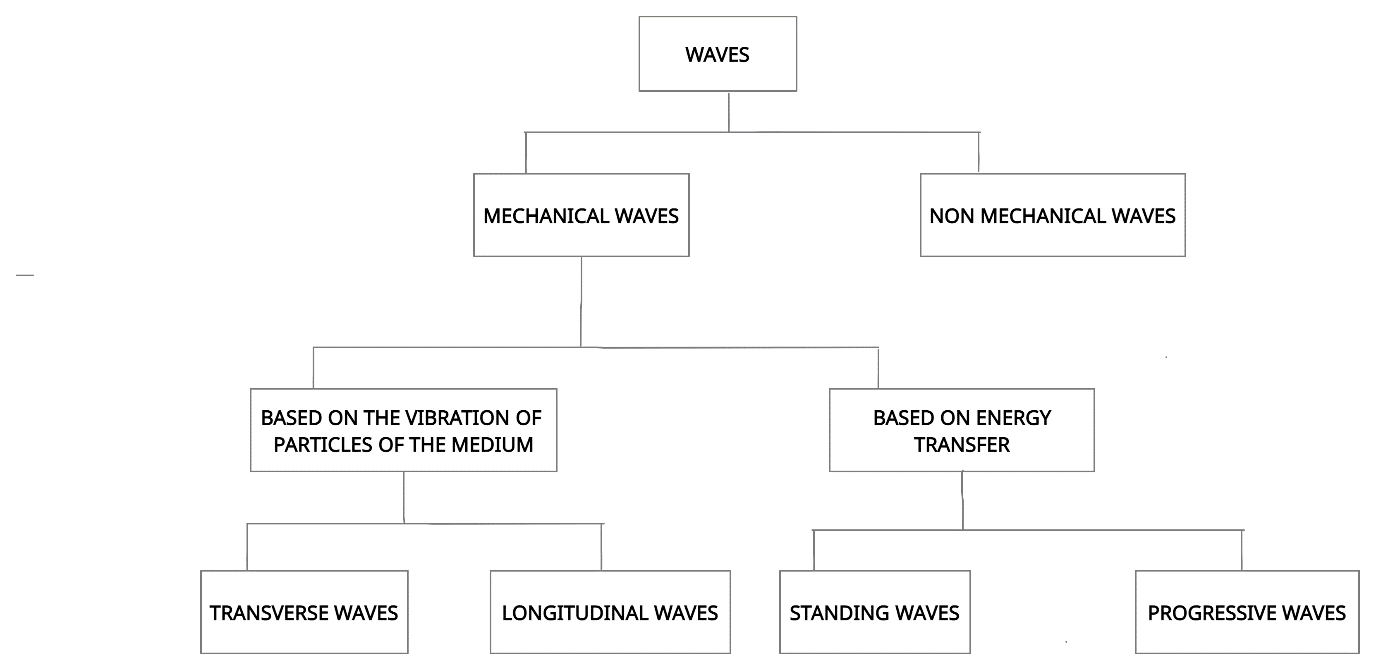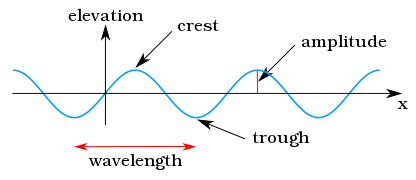Waves - Definition, Types, Properties, FAQs
Introduction to waves
In physics, waves and vibrations are extremely important phenomena. Oscillations can be seen in many different forms throughout nature. We may easily discover vibration examples in practically every physical system, from massive oscillations of sea waves to the jiggling of atoms.
In physics, a wave is an oscillation or a disturbance that travels over time and space with an associated energy transfer. Wave motion often transfers energy from one point to another without causing permanent displacement of the medium's particles, resulting in negligible or minimal related mass transmission. Instead, they consist of oscillating or vibrating around a nearly fixed point.
JEE Main/NEET 2027: Physics Important Formulas for Class 10
NEET 2025: Mock Test Series | Syllabus | High Scoring Topics | PYQs
JEE Main: Study Materials | High Scoring Topics | Preparation Guide
JEE Main: Syllabus | Sample Papers | Mock Tests | PYQs
- Introduction to waves
- What is a wave? What is meant by wave or what is the meaning of wave and how are waves formed?
- Types of waves
- Properties of waves

What is a wave? What is meant by wave or what is the meaning of wave and how are waves formed?
Wave Definition and Wave meaning: A waves physics is a disturbance that propagates in a medium when the medium's particles cause neighbouring particles to move. They, in turn, cause others to move in the same way.
Waves come in a variety forms. During earthquakes, seismic waves shake the ground. We can see faraway stars because light waves move across the universe. Every sound we perceive is a wave as well.
- To measure and describe all of these sorts of waves, scientists use a variety of qualities. The distance between one point on a wave and an identical point on the next, such as from crest to crest or trough to trough, is known as the wavelength.
- The number of waves that travel through one place in one second is referred to as frequency. Frequency is measured in hertz.
Also read -
- NCERT Solutions for Class 11 Physics
- NCERT Solutions for Class 12 Physics
- NCERT Solutions for All Subjects
Periodic wave motion
- The wave generated is known as a periodic wave if the disturbance is continuous and periodic in nature.
- A sinusoidal periodic wave is a periodic wave that varies sinusoidally.
- When a sinusoidal periodic wave passes through the medium, the particles perform simple harmonic motion (SHM).

Types of waves

(Source – Creately self-made)
Waves come in a variety of forms, each with its own set of features. There are three categories based on particle motion orientation and energy direction:
- Mechanical Waves
- Electromagnetic Waves
- Matter Waves
Mechanical waves
Mechanical waves are divided into two categories:
- Longitudinal waves - In this form of the wave, the particle movement is parallel to the motion of the energy, i.e. the medium displacement is in the same direction as the wave. Sound waves and pressure waves are two examples.
- Transverse waves - occur when the motion of the particles is at right angles or perpendicular to the motion of the energy. Light is an example of a transverse wave.
Electromagnetic waves
There is no requirement for the presence of any medium for the propagation of electromagnetic waves. In other words, electromagnetic waves travel at the same speed from one place to another in a vacuum. Periodic variations in magnetic fields occur in these waves, which are referred to as electromagnetic waves.
The interaction of magnetic and electric fields produces electromagnetic waves. Electromagnetic waves are responsible for the light and colour that you see. Microwaves, light waves, heat radiation, X-rays, radio waves, and ultraviolet waves are all examples of electromagnetic waves.
Matter waves
De Broglie waves are another name for matter waves. A beam of electrons, according to Louis de Broglie's hypothesis, can be deflected like any other ray of water wave or electromagnetic radiation.
These waves have properties that are analogous to those of matter, such as atoms and molecules. De Broglie's equation, which represents the "dual" nature of matter, is represented by a number of equations. Matter waves have a frequency that is proportional to their kinetic energy.
Based on the transfer of energy
- Standing Waves
- Progressive Waves
Standing waves are restricted to a region with no energy or momentum transfer, whereas progressive waves transfer energy and momentum between the medium's particles.
Related Topics, |
Properties of waves
The organised transmission of disturbance from one place to another is referred to as a wave. Mechanical and non-mechanical waves are both possible. Mechanical waves, like sound waves, must propagate via a medium. Electromagnetic waves, on the other hand, are non-mechanical waves that do not require a medium to travel and can even go into space.
Transverse waves occur when the particles of the medium move in a direction that is perpendicular to the wave propagation. Longitudinal waves are waves in which the medium's particles vibrate in a direction parallel to the wave's propagation direction.

Amplitude
The amplitude of a wave is defined as its maximum displacement from its mean position. The maximum height is measured from the centre line to the crest or trough. The crest of the wave is the highest point, and the trough is the lowest point. The amplitude of a wave is measured in metres.
Also Read:
- NCERT solutions for Class 11 Physics Chapter 15 Waves
- NCERT Exemplar Class 11 Physics Solutions Chapter 15 Waves
- NCERT notes Class 11 Physics Chapter 15 Waves
Frequency
The frequency is defined as the number of vibrations travelling through a fixed point in a given amount of time. The frequency unit is Hertz.
Time period
The time it takes for a whole wave to pass through a particular point is referred to as the time period. The duration is expressed in seconds. The reciprocal of the frequency is the time period.
Speed
A wave's speed is defined as the distance travelled by a certain point on the wave in a given time interval. The speed of a wave is measured in metres per second.
Phase or phase angle (φ)
It denotes the state of vibration of a medium particle in relation to its mean position.
Phase difference (δφ)
It denotes a particle's various vibrational states at two different times (or any pair of particles at the same time).
ΔΦ = Φ2 – Φ1
Also check-
- NCERT Exemplar Class 11th Physics Solutions
- NCERT Exemplar Class 12th Physics Solutions
- NCERT Exemplar Solutions for All Subjects
NCERT Physics Notes:
Frequently Asked Questions (FAQs)
Based on the orientation of particle and energy the waves are classified as
Mechanical Waves
Electromagnetic Waves
Matter Waves
The examples of transverse waves are:
Torsion Waves
Stringed instruments
Light Waves
Water Waves(ripples of gravity waves)
There are two parts to the longitudinal wave. They are the compression (where the particles come together) and rarefaction (where the particles are apart).
Sound waves, compression waves and p-type earthquake waves are some of the examples of longitudinal waves.
The distance between two identical points (adjacent crests or troughs) is measured in wavelength. Its length is measured in metres. The wavelength and the frequency are inversely proportional.
Also Read
25 Nov'24 02:09 PM
20 Nov'24 05:36 PM
19 Nov'24 02:33 PM
12 Nov'24 10:05 PM
12 Nov'24 07:12 PM
25 Sep'24 03:49 PM
24 Sep'24 10:06 PM
24 Sep'24 06:25 PM
24 Sep'24 04:58 PM